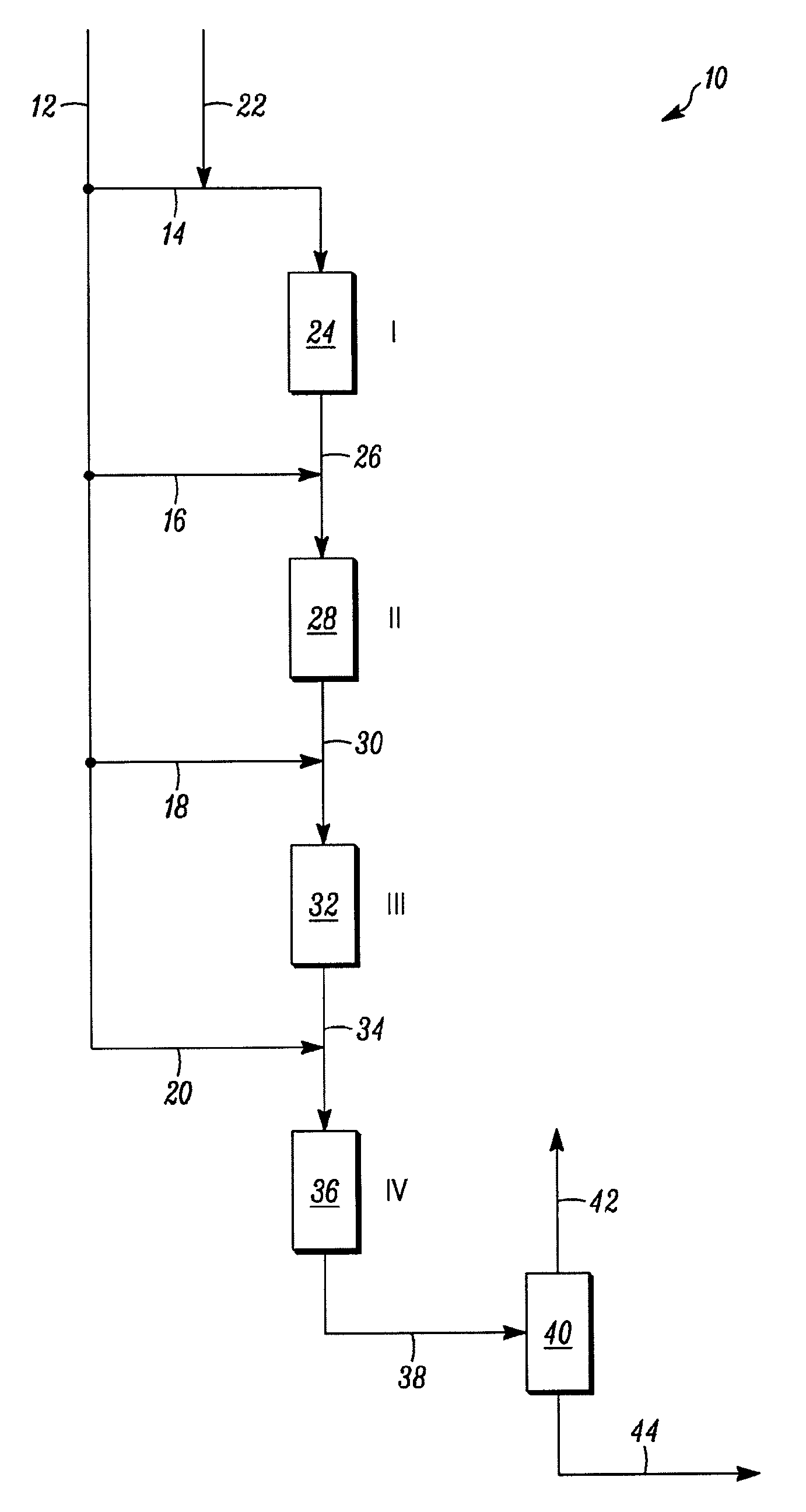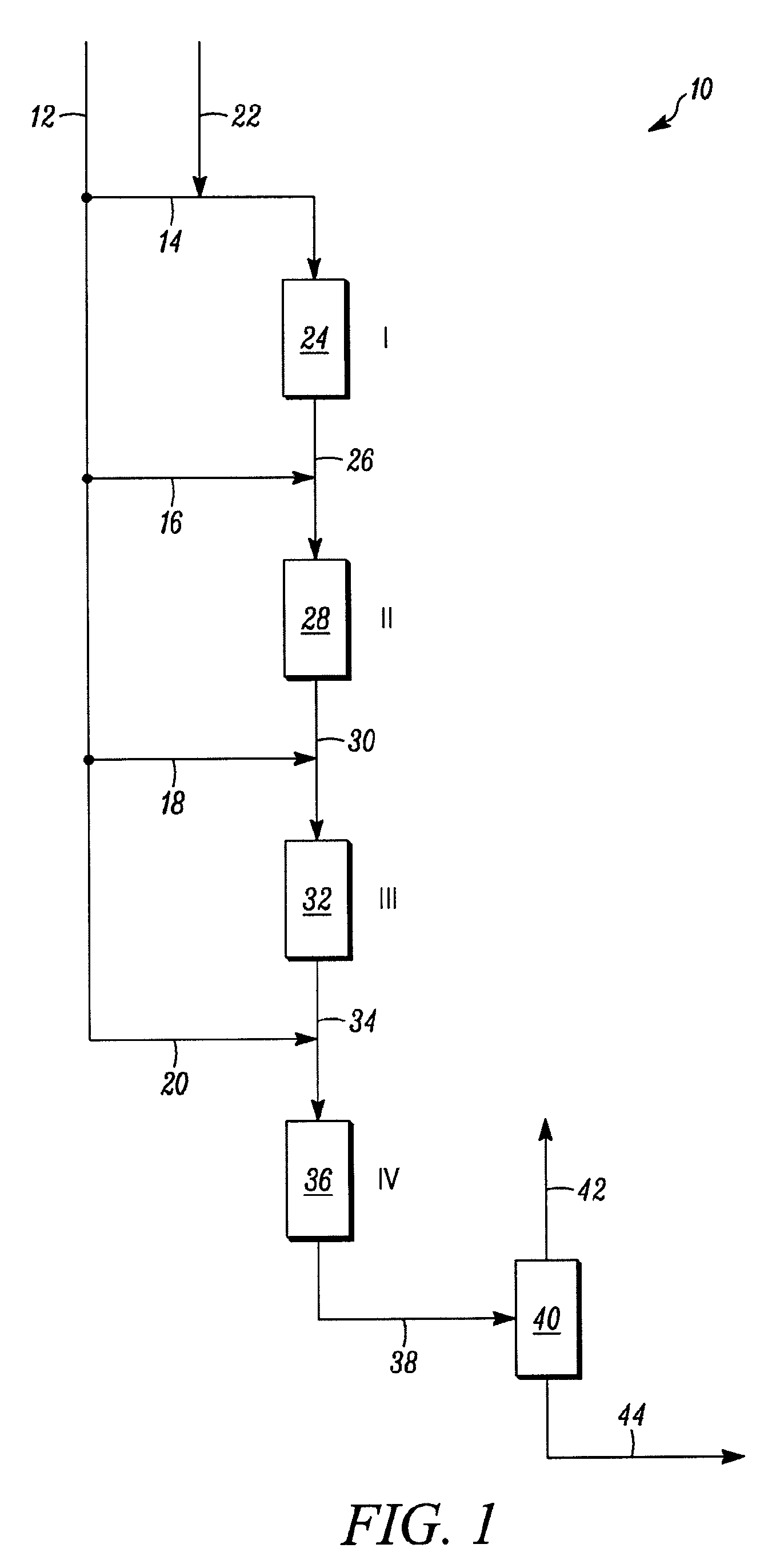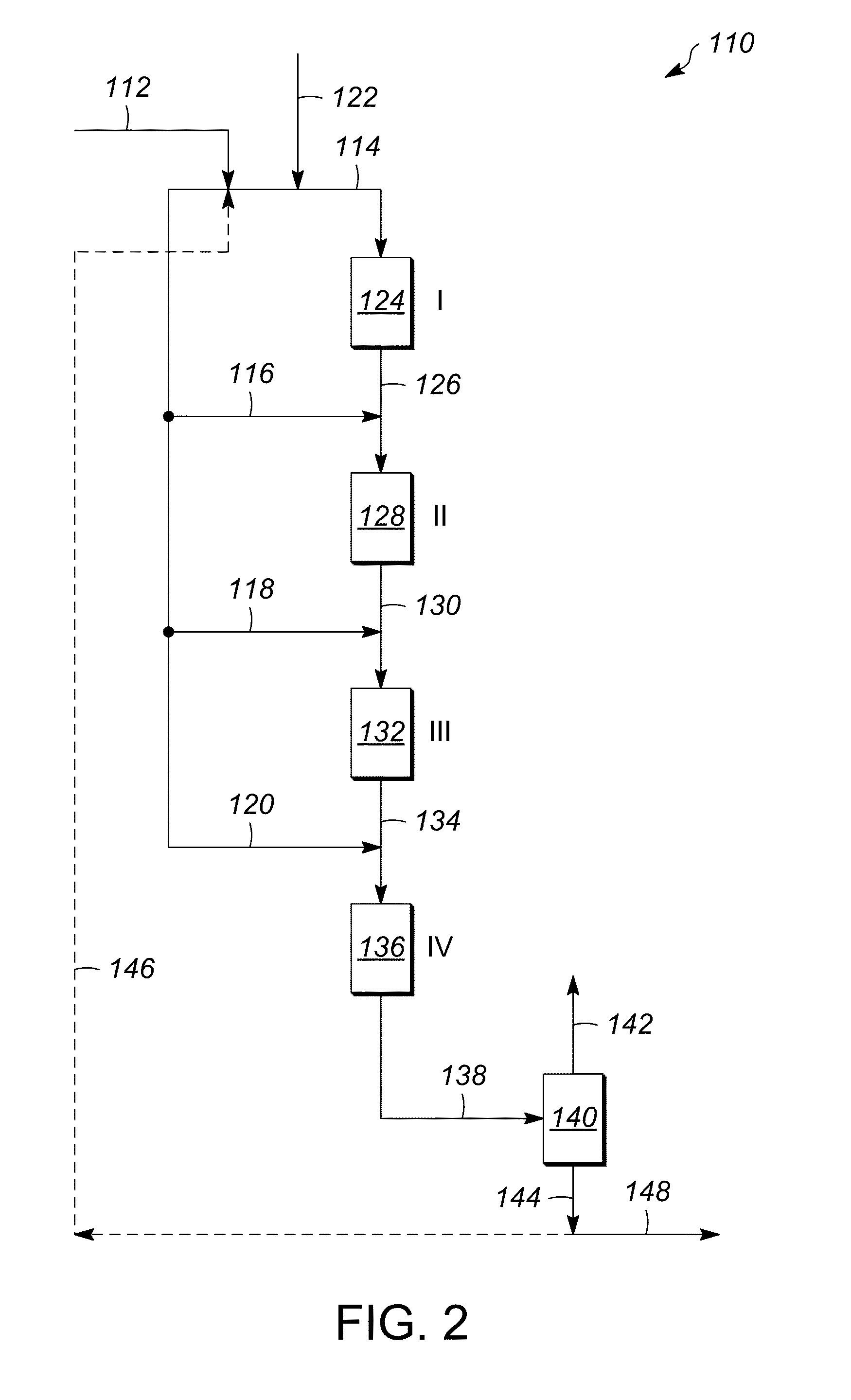Multi-staged hydroprocessing process and system
a hydroprocessing system and multi-stage technology, applied in the field of hydroprocessing of hydrocarbon streams, can solve the problems of increasing the complexity of the hydroprocessing system, increasing the operating cost of the hydroprocessing unit, and adding the quantity of hydrogen through a high-pressure compressor, so as to reduce or eliminate the need for heat exchangers, the effect of considerable cost savings and operational efficiency
- Summary
- Abstract
- Description
- Claims
- Application Information
AI Technical Summary
Benefits of technology
Problems solved by technology
Method used
Image
Examples
example 1
[0070]In this example, the method and system illustrated in one aspect in FIG. 1 is adapted for use with a four catalyst bed hydrotreating unit with an approximate 50,000 barrels per day output. The feed stock is the vacuum gas oil described above. The first two catalyst beds provide a first and second stage, respectively, substantially three-phase, trickle bed hydrotreatment reaction zones and the third and fourth catalyst beds providing the third and fourth stage, respectively, substantially liquid-phase hydrotreatment reaction zones.
[0071]The feed stock is divided into four portions of fresh feed, with only the first portion of fresh feed (fresh feed to the first reaction zone / stage) receiving a flow of hydrogen to supply the hydrogen requirements for all four beds. The hydrogen flow is at 800 scfbff (based on the total fresh feed to the unit). As discussed above, second through fourth portions of the fresh feed are mixed with the effluent from their respective prior hydrotreatme...
example 2
[0075]In this example, the method and system illustrated in one aspect in FIG. 2 is adapted for use with a four catalyst bed hydrotreating unit with an approximate 30,000 barrels per day output. The feed stock is the vacuum gas oil described above. The first two catalyst beds provide a first and second stage, respectively, substantially three-phase, trickle bed hydrotreatment reaction zones and the third and fourth catalyst beds providing the third and fourth stage, respectively, substantially liquid-phase hydrotreatment reaction zones.
[0076]The feed stock is divided into four portions of fresh feed, with only the first portion of fresh feed receiving a flow of hydrogen to supply the hydrogen requirements for all four beds. The hydrogen flow is at 800 scfbff (based on the total fresh feed). The first, portion of fresh feed also includes a recycle flow of processed feed, which in this example provides for a ratio of recycle: fresh feed of 3.33. As discussed above, second through four...
PUM
| Property | Measurement | Unit |
|---|---|---|
| boiling point | aaaaa | aaaaa |
| pressures | aaaaa | aaaaa |
| pressures | aaaaa | aaaaa |
Abstract
Description
Claims
Application Information
 Login to View More
Login to View More - R&D
- Intellectual Property
- Life Sciences
- Materials
- Tech Scout
- Unparalleled Data Quality
- Higher Quality Content
- 60% Fewer Hallucinations
Browse by: Latest US Patents, China's latest patents, Technical Efficacy Thesaurus, Application Domain, Technology Topic, Popular Technical Reports.
© 2025 PatSnap. All rights reserved.Legal|Privacy policy|Modern Slavery Act Transparency Statement|Sitemap|About US| Contact US: help@patsnap.com



